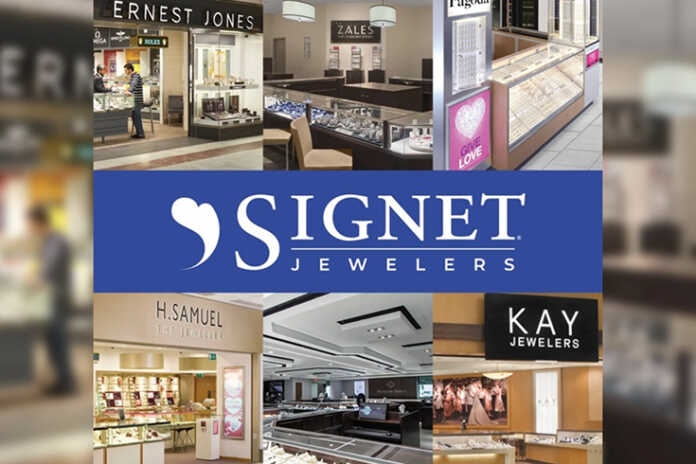When a global retailer like Signet Jewelers — the world’s largest diamond jewellery company — reports a 2 per cent rise in quarterly sales, it typically wouldn’t trigger much excitement. But this modest gain, paired with a 2.5 per cent increase in same-store sales and a 36 per cent drop in profits, is drawing attention across the industry. Not because of the numbers themselves, but because of what they represent: the early returns on a strategic reset that could signal a shift in how major players — and their smaller counterparts — approach the jewellery business.
For independent jewellers across Canada, this is less about following Signet’s playbook and more about interpreting the principles behind it. At the centre of their new direction is a strategy dubbed “Grow Brand Love,” which focuses on refining brand identity, improving customer loyalty, and driving margin-conscious growth. In short, Signet is reorganizing not to grow bigger, but to grow smarter.
Strategic Focus: Beyond Sales Figures
Signet’s CEO, J.K. Symancyk, was clear about what drove the company’s performance this quarter: a renewed focus on its three core brands — Kay, Zales, and Jared. According to Symancyk, each showed sequential growth and healthier margins, despite the overall profit decline.

This isn’t about cutting prices to chase volume. Rather, it’s about reinforcing what each brand stands for and aligning the customer experience with that identity. That’s a significant development in an industry grappling with margin pressures, evolving customer values, and heightened competition from both online retailers and lab-grown newcomers.
What’s interesting is how Signet is going about it. “Grow Brand Love” is, at its core, a return to brand fundamentals: clarifying brand messages, streamlining operations, and using customer insights to deliver more personalized service. In an industry long driven by tradition and slow to adapt, it’s a notable shift toward consumer-centric thinking.
Lessons for Independent Jewellers
The Canadian retail jewellery landscape operates on a much smaller scale, but many of the underlying market forces are the same: rising consumer expectations, growing interest in ethical sourcing, and the pressure to stand out in a crowded market.
The takeaway from Signet’s strategy is straightforward but powerful: clarity and consistency in brand identity matter more than ever. Independent jewellers don’t need big budgets or sprawling operations to benefit from this idea — they just need to sharpen their focus.
Far too often, smaller retailers spread themselves too thin by trying to be all things to all people. Broad assortments, inconsistent branding, and a lack of cohesive storytelling can dilute what makes a store special. But Signet’s example suggests a different path: focus on your strengths, refine your message, and build a loyal customer base that connects with what you stand for — whether that’s artisanal design, sustainable materials, or personalized service.
In this context, brand distinction becomes a form of protection — a way to insulate against commoditization and price-driven competition.
Margin Discipline Over Volume Growth
Perhaps the most relevant aspect of Signet’s performance for independent retailers is its shift away from growth at all costs. The company isn’t trying to grow by pushing volume; it’s working to increase the value of each sale. That approach — margin-conscious, brand-led, and quality-focused — feels particularly applicable to small Canadian jewellers.
Retailers across sectors are rediscovering the importance of profitability over scale, and jewellery is no different. Competing with larger players on price is often a losing battle, but offering unique, high-value products with strong stories behind them? That’s where independents can shine.
The tools are already in place. Many Canadian jewellers offer locally crafted pieces, bespoke services, or ethically sourced stones. But what’s often missing is a strategy to leverage those assets into a stronger, more disciplined pricing model. Rather than matching discounts or running endless promotions, retailers should focus on reinforcing the value proposition behind each piece, turning quality and narrative into pricing power.
Simplification Is a Strategic Move
Across the broader retail landscape, there’s a growing trend toward consolidation and simplification. Big brands are cutting back on experimentation and doubling down on what works. Signet’s reorganization fits into this pattern: focus on what you’re best at, drop what’s distracting, and bring every part of the business in line with the core brand identity.
For Canadian jewellers, especially those with a loyal clientele, this trend presents an opportunity. You don’t need to scale up. You need to sharpen your edge. That could mean rethinking your product lines, refreshing your visual identity, or training staff to better articulate your store’s unique value.
It also means knowing your customer base — not in vague terms, but in data-backed, experience-driven detail. The more clearly you understand who’s walking through your doors — and what they want — the more effectively you can serve them in a way no large chain can match.
Brand Trust as Competitive Advantage
Ultimately, Signet’s new strategy — and its early results — reflect a deeper truth: in the jewellery sector, trust and emotional resonance drive long-term success. That may sound like marketing speak, but it’s backed by how consumers now shop. They’re not just buying a product; they’re buying into a set of values, aesthetics, and beliefs.
Independent jewellers are already well-positioned to meet this demand. They have local presence, authenticity, and agility — qualities that consumers increasingly prize. The challenge now is to formalize those advantages into clear, coherent strategies.
That might involve strengthening your store’s narrative. It could mean refining your service model. It might even be about shifting away from chasing short-term sales and instead nurturing long-term relationships.
What’s clear from Signet’s shift is that brand alignment isn’t just about logos or campaigns — it’s about delivering a customer experience that lives up to your promise. And in 2025, that may be the most valuable investment any retailer can make.


Signet’s “Grow Brand Love” strategy is, in many ways, a back-to-basics approach. But its early effectiveness shows that even large-scale retailers are now prioritizing brand clarity, customer trust, and experience-driven value. For Canadian independent jewellers, the message is clear: this is not a time to expand for the sake of growth, but to sharpen your identity and build deeper customer loyalty.
In a competitive, fast-changing market, scale is no longer the ultimate advantage. The distinction is. And the jewellers who invest in clarity, consistency, and connection will be the ones who thrive.
![]()








